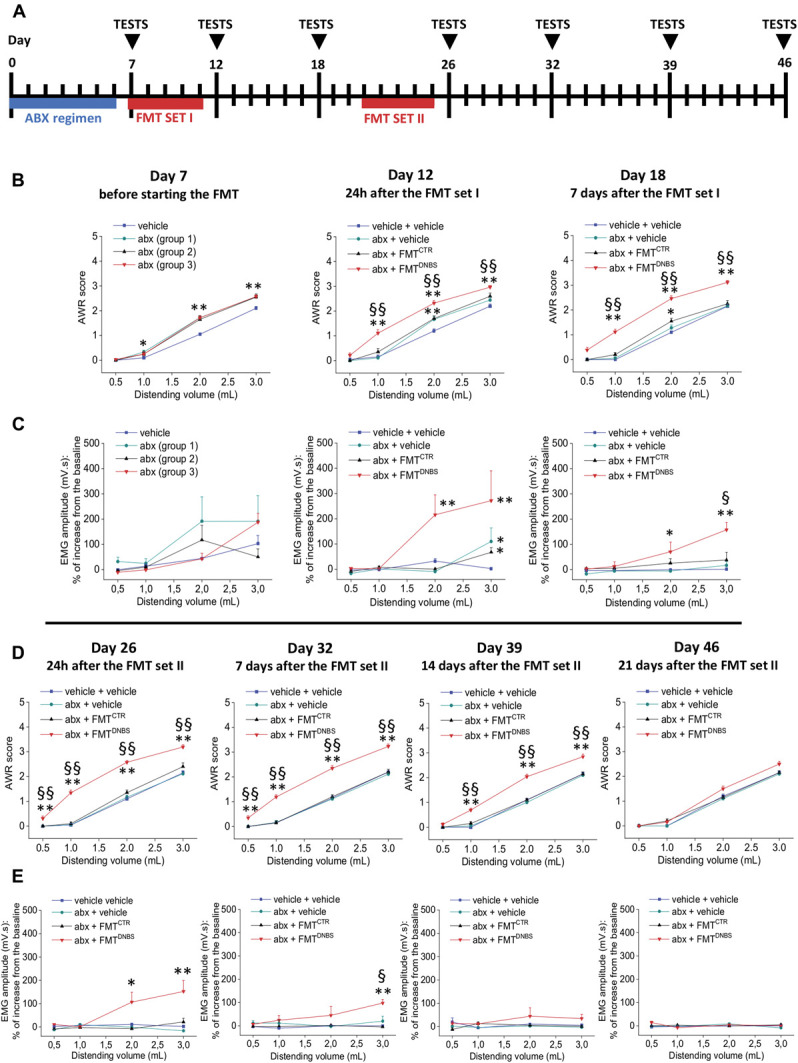Figure 1.

Effect of antibiotic treatment and FMT from DNBS-treated animals on visceral sensitivity of naive recipients. As shown in the scheme (A), rats were treated, with a combination of antibiotics for 7 days; the control group was treated with vehicle. On day 7, the abx-treated animals were divided into 3 groups, FMT from CTR donors, FMT from DNBS donors or vehicle, and were, respectively, administered per os for 5 consecutive days. One week after, the administrations were repeated. Behavioural tests were performed at the end of the antibiotic treatment, 24 hours and 7 days after each cycle of FMT and once week after the last treatment. Visceral sensitivity was assessed in the animals by measuring the AWR (B,D) and the VMR (C,E) to CRD (0.5-3 mL). Each value is the mean ± SEM of 5 rats per group in the VMR test and 10 or 14 (abx + FMTDNBS) rats per group for the AWR test. Statistical analysis was one-way analysis of variance followed by Bonferroni post hoc comparison. *P < 0.05 and **P < 0.01 vs vehicle or vehicle + vehicle–treated animals. §P < 0.05 and §§P < 0.01 vs abx + FMTCTR–treated animals. abx, antibiotics; AWR, abdominal withdrawal reflex; CRD, colorectal distension; CTR, control animals; DNBS, dinitrobenzenesulfonic acid; FMT, faecal microbiota transplantation; VMR, visceromotor response.
